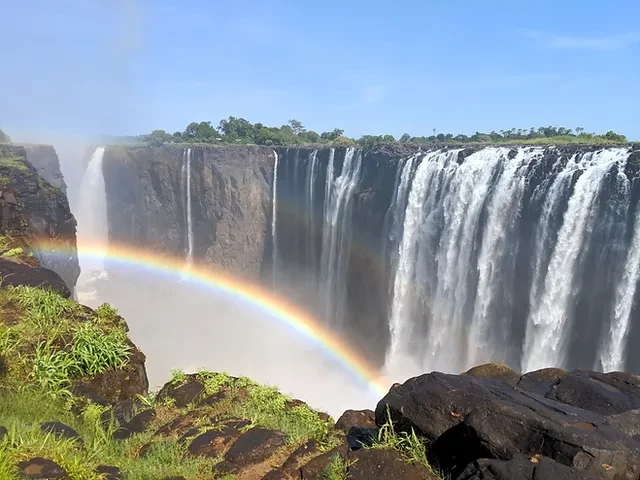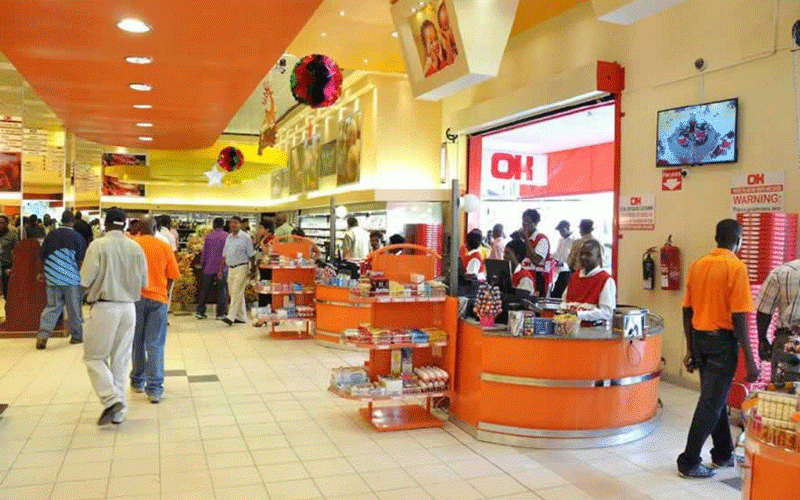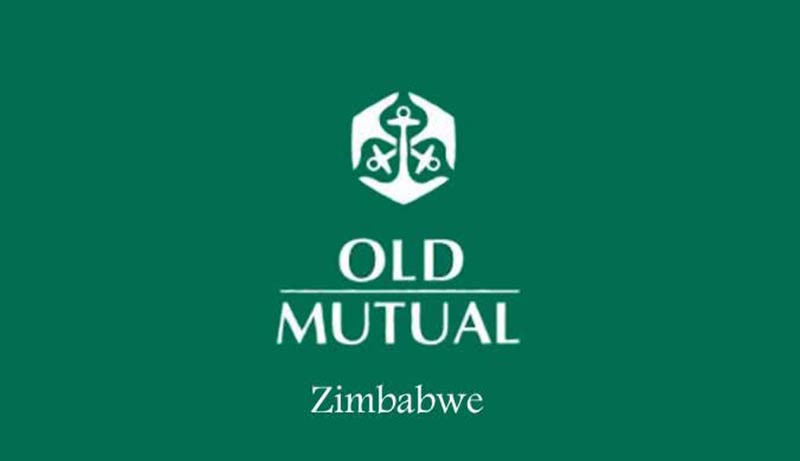
According to the United Nations World Tourism Organisation (UNWTO), in 2022 there were 963 million international tourists. The top international tourist destinations where France, Spain and the United States with 79.4 million, 71.7 million and 50.9 million international visitors, respectively. Africa received only 3% of the travellers, with a mere 46.5 million visitors.
The greatest arrivals were recorded in Egypt, Morocco, Tunisia and South Africa with 11.7 million, 11 million, 6.3 million and 5.7 million, respectively. It is also noteworthy to outline that, South Africa regularly outperforms Tunisia, although it has struggled to recover since the covid pandemic.
For example, in 2019 it was the third-most visited (in Africa) and had 10.2 million international tourists. Zimbabwe is typically the sixth-most-visited country on the continent, taking its place after Algeria, which surpasses it by about one hundred thousand visitors, each year. The country (Zimbabwe) had just over 1 million visitors in 2022 (1 043 781). This was also much below the pre-pandemic level of 2.3 million in 2019.
State of the local tourism sector
Zimbabwe has several tourist destinations, located in almost every region of the country. These destinations include Victoria Falls, Kariba, the Great Zimbabwe monument, Eastern Highlands, Gonarezhou, Matopos and other national parks and museums situated in almost each province of the country. According to the Zimbabwe Tourism Authority's (ZTA), “Tourism and Trends Statistics Report”, tourism sector receipts amounted to US$911 million, in 2022. This is far below the 1.2 billion generated in 2019. The 1 043 781 international tourist arrivals comprised 693 281 who visitedfrom within Africa and only 350 500 travellers from overseas (outside the continent).
Of the 350 500 exotic travellers, most were from North America (91 282), UK and Europe (174 544) alongside Australia and New Zealand (18 330). In total, tourists from "the West" made up 81% of Zimbabwe's overseas tourist arrivals, or 284 156, out of the 350 500. The one million tourists (1 043 781) travelled to Zimbabwe for various reasons, which include visiting friends and relatives (464 788), transiting to other countries (289 617), business (156 104), leisure (82 022),shopping (24 701), education (18 267) and also unspecified reasons (8 282).
It is also crucial to state that, Zimbabwe's tourism sector is in recovery, although it remains amongst the top destinations, even now. It is still striving to reach successes realised in previous decades. In 1999 for example, the country received 2 090 407 international visitors. These are robust numbers because of the time in which they were realised and also due to the fact that Zimbabwe had a very shallow diaspora presence at that time.
If there was to be no break in growth, arising from various disruptions, it is fair to suggest that the country would have been receiving around 4 million purely foreign visitors, coupled with the diaspora which would provide perhaps added another 1 million to the foreign arrivals. This would imply that tourism receipts would have been US$5 billion or more, since the international arrivals would be five-times more than those recorded in 2022, which had US$911 million in tourism receipts, from 1 million tourists.
There is also domestic (local) tourism in Zimbabwe and in keeping with other countries, it outperforms international tourism. The little data which is available can be used to indicate the difference in expenditures and numbers between international and domestic tourism.
The National Park entry statistics of 2022, for example, show that local tourists who paid for entry into national parks (468 694) were more than twice the number of foreign tourists (215 236).
Entries into the country's 13 National Museums and Monuments, which are accounted for separately from the parks, amounted to 162 902, in 2022. Out of the 162 902 visitors it is striking that only 5 478 were foreigners, with the overwhelming majority being locals. The Great Zimbabwe Monument was the most visited, with 45 359 locals and only 2 707 foreigners touring it. These statistics can be startling, especially for locals who hold the Monuments in high esteem.
The country's total hotel room numbers are currently, only 7 168. Registered lodges, which provide both a supporting and competing role to hotels, offer an additional 5 047 rooms, nationally. At these levels it can prove insurmountable for the country to host major tourist-attracting events (continental or international sports, conferences, etc). Itshould also be shrewd to keep in mind that, the 12 212 available rooms (7 168 + 5047) are not of the same grading. Only a very few of the rooms belong to five-star-graded hospitality outlets.
The resurgence of more tourist visits, after the covid pandemic and the target of the Ministry of Tourism, to realize a US$5 billion tourism sector by 2025, indicate that the country needs more room capacity, at the earliest. The Hospitality Association of Zimbabwe (HAZ) President, Farai Chimba, concurs and insists that the country needs an additional 20 000 rooms by 2030.
Interpreting the trends and statistics
The ZTA report clearly shows that Zimbabwe greatly depends on overseas tourists from “the West”, ahead of those from Asia. This is in spite of the fact that Asia is the most populated and has a growing middle-class, which is instead, increasing its visits within its own region (from one country to another) and to the Middle-East, Europe, and the Americas.
Thus, Zimbabwe needs to regularise its relationship with the West, in order to grow visitors from that region. In this regard, the Ministry of Foreign Affairs and International Trade, should capacitate all influential persons in government and the ruling party, so that their bilateral relationship with the West is sanitary.
The fact that there are more business tourists (156 104) than those seeking leisure (82 022), implies that the country needs a more flexible business visa, when compared to the leisure visa. Current records show that business visas are valid for only 30 days whilst leisure visas permit 90 days stay, in the country. Regularising this discrepancy would be beneficial.
The number of tourists visiting friends and relatives (464 788) also calls for civil local politics and sound relationships between the government and citizens. This is because during such visits, political matters will typically be discussed and the negative or favourable news arising from the interactions, will be spread around the world, making up that which brand's Zimbabwe, determining how it is perceived internationally.The 289 617 transiting and 24 701 shopping tourists, highlight the importance of placing more commercial activity at the major ports of entry and along the highways branching from them.
In order to improve more tourist flows to other areas, apart from Victoria Falls, the alternative tourist destinations need to be marketed more passionately, domestically and internationally. Placing monuments such as the Great Zimbabwe and other destinations on the local currency, for example, goes a long way to make the destinations visible and appealing. However, this would work best if the currency and macro economy are stable.
Thus, the RBZ should be informed that its performance has such nuanced influences on the local tourism sector. A stable domestic currency would also spill into greater disposable incomes for local tourists.
Miscellaneous
Diplomatic missions should be assigned the task of marketing Zimbabwe and its resorts, in the countries where they have been dispatched. Their marketing should be concentrated in the West, which is the source of the most overseas tourists and should include the more affordable social media marketing. As a matter of fact, ambassadors should also be evaluated based on growth of tourists from their territories.
Expanding and perfecting the country's infrastructure and public services will also attract more arrivals, lengthen stays, increase tourist spending and connect more local tourist destinations. World-class roads, robust internet connectivity, airports, plus reliable water and electricity supply, can also result in more relocations from overseas, with foreigners electing to be Zimbabwean citizens.
Improving the country's agricultural activity will also lead to the beautification of Zimbabwe's landscape and lead to more domestic and international tourists, visiting hospitality resorts in the farming areas. To add to that, massive tree plantings across the breadth of Zimbabwe would also enhance the local climate and aesthetic. If the Ministry of Environment could legislate that, it would be commendable, timely and beneficial.
Innovativeness on the part of the government and hotels will also be profitable. For instance, drawing global artists and influencers to visit resorts during the first quarter of the year, when business is usually low, can attract more visitors. The global influencers can be requested to participate on a philanthropic basis, with eventticket sales going to support conservation, anti-poaching activities and child-headed families, for example. Bundling charity with show-business and greater tourist visits would be suitable and progressive for a country of Zimbabwe's calibre.
Adding more activities at other locations apart from Victoria Falls, would be judicious. In this regard, ZTA or the private sector, may establish a theme park, aquarium, children's play area, pool or water slides next to the sites. These will act as additional attractions which drawmore visitors. Sponsoring major events such as international golf tournaments, jewellery, art, bird, fishing or culturalfestivals, can also draw attention from the right quality of tourists.
All local trade and industry bodies, should be encouraged to be affiliated to international professional associations in their field. Further, they should lobby for their groups’ international meetings and conventions to be held in Zimbabwe, with the Ministry of Tourism offering slight subsidies, where possible. This will enhance the country's visibility and attract more business travellers.
Five-year multi-entry visas for tourists, may be sold at US$150 each. This price is in line with internationalbenchmarks and would encourage more visits, whilst generating revenue for government. The US charges US$160 for a similar visa, whilst Egypt charges a staggering US$700, although tourism experts there, opine that its price deters arrivals.
ZTA should also strive fortourists from China and Taiwan to be granted visas upon arrival, instead of having to apply for eVisas.
Additionally, foreign passport holders arriving at each airport should be given pamphlets which showcase Zimbabwe’s various tourist resorts and free cell phone sim cards, with airtime and data. This would enhance the marketing of alternative tourist destinations in the country. With 1 million visitors, for example; $1 airtime, 1 gigabyte of data and a pamphlet, could cost just US$3 each, or US$3 million, in total (1 million x $3). The benefits could however flow into tens or hundred of millions in tourist revenues.
Most importantly, Zimbabwe will need to court more tourists as South Africa assumes the G20 presidency in 2025. The more than 60 meetings held by the bloc, each year, will draw millions of more travellers to the region. Having delegates to re-route from South Africa or extend their stay to include Zimbabwe will serve great good for the local tourism sector and the economy at large.
- Tutani is an entrepreneur and political economy analyst. — tutanikevin@gmail.com.










